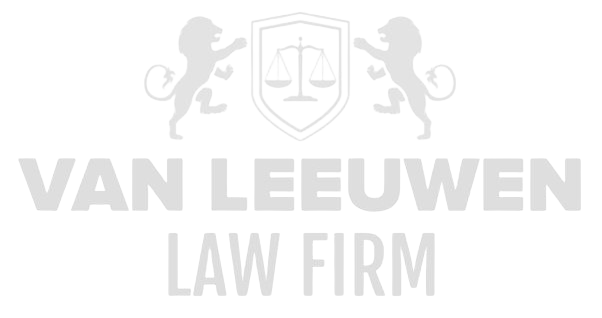Digital investigation in complex enforcement contexts is undergoing a phase of profound transformation, characterised by an unprecedented growth in data volume, diversity of data sources and the deployment of increasingly advanced analytical technologies. Organisations confronted with cross-border investigations, massive data flows and heightened expectations regarding the accuracy and reliability of digital evidence are being compelled to reassess their forensic processes. In this context, the application of AI-driven analytical methods, automated forensic workflows and scalable e-discovery architectures assumes an increasingly prominent role. The associated shift from manual to algorithmically supported investigation models requires sustained attention to legal compliance, technical robustness and evidentiary rigor. Moreover, this new landscape demands a recalibration of investigative methods, governance structures and interdisciplinary oversight in order to maintain the reliability of digital evidence at an appropriately high level.
In addition to the technological and legal complexity, a new area of tension is emerging around the lawfulness of data processing, international cooperation and the regulation of algorithmic decision-making. The dynamics of data-intensive investigations exert pressure on both regulators and companies to adopt responsible, proportionate and transparent forensic methods. The deployment of blockchain analytics, behavioural analytics and automated detection mechanisms introduces new opportunities, but also substantial responsibilities with respect to the validation of techniques used, the safeguarding of dataset integrity and the accuracy of reconstructions. This transformation requires each actor to understand the implications of digital-forensic tooling and to embed such tooling appropriately within both operational and legal frameworks, so that digital evidence is not only technologically sophisticated but also complies with the highest standards of reliability and proportionality.
Automation of digital evidence collection through AI-assisted tools
AI-assisted tooling introduces a paradigm shift in the organisation of digital evidence collection, as such systems are capable of analysing, filtering and categorising large quantities of unstructured data at high speed. This significantly increases investigative efficiency, provided that the technologies used comply with legally required standards of transparency and explainability. The use of machine-learning models for early data triage and pattern recognition makes it possible to identify potentially relevant information more rapidly, while at the same time a detailed audit trail remains essential to substantiate the evidentiary value of the methods employed. The quality and reliability of these automated classifications are directly dependent on the training data, the model architecture and the way in which algorithmic risks are proactively monitored.
AI-driven systems can also help to reduce human error and inconsistency in digital investigations, as repetitive and error-prone tasks are automated and standardised workflows are more effectively enforced. A crucial precondition, however, is that automation is carefully embedded with appropriate attention to data governance, access rights, logging and risk assessment. In the absence of such safeguards, automated evidence collection may result in inaccuracies or unintended distortions which are difficult to correct in later stages of the investigation. At the same time, it must be ensured that automation does not lead to a reduction in human oversight, particularly where critical decision points form part of the investigative process.
Finally, AI-supported evidence collection requires organisations to invest in robust validation and verification frameworks, so that both internal auditors and external regulators obtain insight into the functioning and reliability of the systems deployed. Thorough documentation of model decisions, parameters, training datasets and performance indicators is essential in order to withstand judicial scrutiny of the ultimate findings. As AI-driven techniques mature, the expectation will increase that forensic teams can demonstrably explain how a system arrived at a particular finding and which limitations are inherent in the methodology used.
Scalability requirements for multi-terabyte e-discovery
The e-discovery domain is confronted with exponential growth in digital data sources, ranging from enterprise environments to cloud infrastructures and collaboration platforms. Multi-terabyte datasets therefore require scalable architectures capable of efficiently extracting, processing and analysing enormous data volumes. This scalability cannot be achieved solely through hardware expansion; there is also a need for optimised indexing strategies, parallel processing pipelines and advanced data-reduction techniques. At the same time, every step must comply with strict legal requirements relating to data minimisation, proportionality and purpose limitation, so that e-discovery does not unduly interfere with privacy interests.
Technical scalability represents only one aspect of e-discovery; legal scalability is an equally important component. As data volumes grow, the complexity of retention obligations, chain responsibilities and procedures for lawful access increases proportionately. Multi-jurisdictional investigations also introduce divergent rules concerning access to business communications data, security logs and cloud-hosted information. It is essential that e-discovery platforms are able to accommodate this variation through configurations that respect which data may be processed in which jurisdiction and which restrictions apply to international transfers.
Operationally, multi-terabyte e-discovery requires a carefully designed governance and escalation structure. In the absence of clear allocation of responsibilities, organisations run the risk of uncontrolled data expansion, inconsistencies in processing and incomplete or inaccurate documentation of investigative steps. In this context, scalability means that processes must be not only technically robust, but also legally traceable and forensically sound. Each step must be reproducible, supported by detailed logging and directed at preventing data corruption, loss or unauthorised access.
Validation of algorithmic forensic techniques
The growing reliance on algorithmically supported forensic tooling increases the need for a robust validation framework that safeguards the reliability, reproducibility and legal defensibility of these techniques. Algorithmic models are susceptible to bias, data quality issues and model drift, which makes continuous monitoring and periodic recalibration essential. Validation goes beyond simply testing model performance; it also encompasses the assessment of data-governance processes, the integrity of training sets and the effectiveness of error-detection mechanisms. Only through this multidimensional evaluation can the algorithms used be justified within forensic and supervisory procedures.
In addition, the evidentiary deployment of algorithmic methods requires that organisations be able to demonstrate that the models used function in a controllable, transparent and explainable manner. The demand for explainability is not merely a technical issue; it constitutes a legal requirement for presenting digital findings persuasively in administrative, civil or criminal proceedings. Where an algorithmic process forms the basis for a key investigative result, it is necessary to document precisely which assumptions, parameters and data transformations the model has applied. This is required both to withstand judicial review and to safeguard the integrity of the findings.
Finally, external oversight plays a crucial role in the validation of algorithmic forensic techniques. Regulators increasingly expect organisations to demonstrate that systems comply with both technical standards and legal requirements, including principles of transparency, non-discrimination and data minimisation. A carefully constructed validation and audit framework enables organisations to mitigate risks proactively, ensure consistency and make reliability demonstrable in complex enforcement environments.
Cross-border data transfer restrictions and lawful-access issues
International investigations give rise to a complex combination of data-protection regimes, legal access instruments and fundamental rights. Cross-border data transfer restrictions require that each data flow be carefully assessed in terms of lawfulness, necessity and proportionality. Differences between jurisdictions make it necessary to conduct detailed preliminary analyses concerning the validity of transfer mechanisms, the conditions for lawful processing and the safeguards required to regulate access to data by foreign authorities. This tension is further heightened by the growing number of national legislative frameworks that demand extraterritorial access to digital evidence stored on foreign servers.
Lawful-access issues also touch on the core of the trust relationship between governments, companies and individuals. Digital investigations sometimes require access to data hosted by international cloud providers, giving rise to complex interactions between national investigative powers and international privacy regulation. It is important that organisations maintain detailed procedures for assessing external data-disclosure requests, taking into account both the legal basis and the potential impact on data subjects. Non-compliance can lead to substantial risks, including violations of international data-protection rules and impairment of the evidentiary integrity.
Moreover, cross-border data processing is heavily dependent on transparent decision-making, documented balancing of interests and technical measures that limit the scope of data transfers. Encryption, pseudonymisation and strict access controls form key instruments for preventing data from becoming available to parties outside the applicable legal framework without adequate safeguards. These measures must be applied and documented consistently in order to facilitate both internal and external audits and to comply with statutory obligations relating to accountability and lawfulness.
Integration of blockchain analytics into fraud prevention
Blockchain analytics is an emerging and rapidly developing discipline that has become crucial in tackling complex fraud and money-laundering schemes involving decentralised digital assets. Through specialised analytical tools, transaction flows within blockchain networks can be visualised, clustered and linked to known addresses or transactions under scrutiny. These analytical methods require deep technical expertise combined with legal prudence, since blockchain transactions are pseudonymous, but in certain circumstances may be traced back to identifiable individuals or entities. The use of such methods calls for meticulous documentation and adherence to legal requirements relating to proportionality and lawful processing.
The deployment of blockchain analytics offers significant advantages, including the ability to detect complex fraud patterns that would otherwise remain hidden within distributed networks. This may relate to unusual transaction flows, attempts at obfuscation through mixers or the use of compromised wallets. At the same time, this form of analysis demands caution against misinterpretation, as the absence of contextual information can result in misleading conclusions. The evidentiary use of blockchain analysis therefore requires thorough technical substantiation and a precise description of the methodologies employed.
Finally, integration of blockchain analytics must be embedded within broader compliance and enforcement strategies. These techniques cannot operate in isolation, but need to be combined with supplementary sources such as KYC information, internal corporate logs and external datasets in order to ensure the reliability and completeness of investigative findings. This requires a multidisciplinary approach that combines technological expertise with legal compliance, so that blockchain analysis provides a robust, verifiable and legally sound basis for fraud prevention.
Authentication and Integrity of Digital Evidence
The reliability of digital evidence depends entirely on the extent to which the authenticity and integrity of data are safeguarded throughout the entire investigative process. Digital data is highly susceptible to manipulation, degradation, and metadata loss, making strict chain-of-custody procedures essential to ensure that every action is fully traceable. Authentication requires that the origin, completeness, and unaltered state of the evidence be demonstrably documented, including through hashing mechanisms, forensic copies, and detailed chain-of-custody records. These safeguards are indispensable to prevent any diminishment of evidentiary value, particularly in legal proceedings where even minimal discrepancies may justify exclusion of the material.
The use of cryptographic techniques forms a core component of integrity assurance, although organisational controls are equally vital. Without carefully assigned access rights, controlled storage environments, and clearly delineated authorisations, there is a risk that data may be inadvertently altered or deleted. It is therefore essential that forensic teams operate through standardised protocols that are applied consistently, regardless of the type or origin of the data. In complex investigations involving multiple parties and datasets spread across diverse infrastructures, such procedures must be uniform and each step must remain fully reproducible.
Moreover, any assessment of digital evidence must recognise that metadata is crucial for contextualising the evidence, yet uniquely vulnerable. Every automated process, migration, or export mechanism has the potential to modify metadata, thereby creating significant risk to the evidentiary value of the dataset. For that reason, the investigative process must incorporate explicit measures to stabilise, isolate, and document metadata, ensuring that evidentiary conclusions rely not only on the content of the data but also on a reliable historical trail that verifies the integrity of that data.
Detection of Insider Threats Through Behavioural Analytics
The threat posed by insider activity ranks among the most complex and underestimated risks in digital investigations and cybersecurity. Behavioural analytics provides a powerful tool for early detection of abnormal user patterns, as these techniques focus on behavioural deviations rather than on predefined signature-based indicators. Such systems monitor access behaviours, file manipulation, network activity, and interactions with enterprise applications. By leveraging advanced statistical models and machine-learning techniques, subtle deviations can be identified that would otherwise remain hidden, yet may be indicative of fraud, data exfiltration, or unauthorised activity.
A persistent challenge, however, lies in preventing false positives and avoiding disproportionate monitoring. Behavioural analytics can be highly sensitive to contextual variations, organisational changes, or temporary work patterns. It is therefore essential that detection mechanisms be complemented by clear escalation protocols, human review, and proportionate response measures. Furthermore, any form of behavioural analysis must be embedded within legally compliant frameworks concerning privacy, necessity, and transparency. Insufficient alignment between detection systems and legal requirements may result in disproportionate or unlawful processing of employee data, carrying significant risk.
Effective implementation of behavioural analytics also requires organisations to invest in a detailed understanding of normal business processes, access-right structures, and the specific risks associated with different roles and functions. Without a robust reference model for normal behaviour, deviations are difficult to interpret, diminishing the analytical value of the system. A carefully constructed behavioural baseline, combined with continuous monitoring and periodic recalibration, ensures that insider threats are detected in a timely and proportionate manner without causing unnecessary disruption or infringing upon individual rights.
Forensic Reconstruction of Automated Decision-Making
As organisations increasingly rely on automated decision-making, reconstructing such processes becomes an indispensable component of digital investigations. Forensic reconstruction requires structured and transparent documentation of decision logic, model parameters, input data, and output results. In modern architectures—where models are dynamically retrained and parameters continuously adjusted—this poses a significant challenge. Without full traceability, it may become impossible to determine retrospectively how an automated system reached a particular outcome, which is problematic in contexts where legality, proportionality, or non-discrimination must be assessed.
Conducting forensic reconstruction extends beyond technical logging; it demands detailed governance guidelines, documentation standards, and audit mechanisms that illuminate both algorithmic functions and the organisational decision-making surrounding them. This includes recording change histories, version control, data flows, performance indicators, and any human interventions that may have occurred. Only when these elements are documented in conjunction can a complete and legally usable account be formed of the decision-making process as it actually took place.
Explainability also plays a central role in forensic reconstruction, particularly when dealing with complex models such as deep learning architectures. Although such models can generate powerful predictions, their internal logic is often difficult to render transparent. The use of explainability tools, model visualisations, and interpretable intermediate layers is therefore increasingly important—not only to support technical analysis but also to justify findings in legal settings. In circumstances where automated decision-making may directly affect rights, obligations, or sanctions, it is essential that reconstruction of the decision process be both technically robust and legally traceable.
Chain Collaboration in Digital Investigations (Supervisors, LEAs, Companies)
Digital investigations rarely occur in isolation; they almost always take place within a complex chain of stakeholders, including supervisory authorities, law enforcement agencies (LEAs), private companies, and external forensic service providers. Such chain collaboration introduces substantial coordination challenges, both technically and legally. Different parties often apply divergent standards, security protocols, and statutory requirements, making close alignment necessary to ensure interoperability and consistency in investigative outcomes. In cross-border investigations in particular, it is essential that information exchange complies with strict requirements regarding lawfulness, confidentiality, and data minimisation.
The allocation of roles within such collaborative chains must be precisely defined, as ambiguity may lead to investigative gaps, unlawful data processing, or conflicts between legal regimes. Clear agreements on data access, preservation obligations, escalation procedures, and the manner in which forensic findings are shared are fundamental to effective collaboration. Moreover, each party must provide full transparency concerning the techniques and methodologies used, ensuring that evidence is not only technically sound but also legally admissible for all stakeholders involved.
Chain collaboration further requires that all participating parties uphold equivalent standards for security, chain-of-custody safeguards, and reporting. If even one party fails to maintain adequate controls, the integrity of the entire investigation may be compromised. Establishing joint protocols, interoperable technical standards, and multidisciplinary coordination structures is therefore essential to achieving a robust and seamless collaborative environment. This enables the creation of an integrated investigative ecosystem in which information can be shared and utilised securely, proportionately, and in compliance with legal requirements.
Standardisation of Reporting and Evidentiary Assessment
The diversity of forensic techniques, data streams, and analytical methods necessitates standardisation of reporting processes to ensure that investigative findings are presented in a consistent, comprehensible, and legally reviewable manner. The absence of standardised formats may result in interpretative discrepancies, incomplete documentation, or ambiguity regarding the evidentiary weight of digital findings. To mitigate these risks, a structured framework is required in which technical details and legal interpretation are integrated in a considered and coherent way. This includes describing analytical methodologies, limitations of the tools used, reliability of datasets, and any uncertainty margins.
Evidentiary assessment also requires that digital findings be evaluated on the basis of reproducibility, transparency, and methodological integrity. Reports must therefore provide adequate insight into the origin of the data, the transformations applied, the algorithmic models used, and the reasoning behind the conclusions drawn. Without such transparency, evidence may be insufficiently persuasive in legal proceedings or may even be excluded due to doubts concerning authenticity or integrity.
Finally, standardised reporting frameworks ensure that various stakeholders—including judges, regulatory authorities, and technical experts—can interpret and weigh digital evidence in a uniform manner. This enhances consistency in decision-making, increases predictability of outcomes, and strengthens confidence in digital investigations. Through structural harmonisation of reporting and evidentiary assessment, digital forensics becomes more mature, reliable, and legally future-proof.















